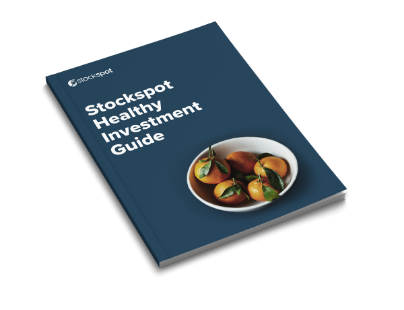In this article we compare the best gold ETFs, but you might also find these other gold-related articles helpful:
- Best ways to buy gold
- Why super funds should own more gold
- All your investing in gold questions answered
- Investing your superannuation into gold
When you think of gold, you probably don’t think of gold ETFs.
Instead, you might picture an 18-carat gold necklace from Tiffany & Co – but in truth, only half of global demand for gold comes from jewellery.
The other half comes from investors – governments, banks and everyday people who buy it for its value – and for industrial uses, such as in technology.
It isn’t surprising that so many investors still value gold: you could fit the entire world’s supply into a cube that measures 20 metres. That’s about the size of a tennis court.
This is one of the reasons why gold tends to retain its perceived rarity and hold its value over time.
We’ve written previously about how gold helps your portfolio and why to buy gold as a portfolio diversifier and we see it as an important part of any investors portfolio (and superannuation fund).
In this article we’ll cover:
- Why gold as an investment?
- How do you buy gold ETFs in Australia?
- Which gold ETF is best?
- What are the best gold miner ETFs?
- Verdict and conclusion
Why gold as an investment?
Gold is a key store of value and can play an important role in any investment portfolio. It offers diversification benefits, especially when share markets fall or during periods of economic uncertainty.
For example, the coronavirus was a total shock to investors, but those who owned gold benefited from its safe haven status in reducing risk and increased defensiveness by cushioning the downfall.
Gold has proven to be a good performer in environments of low or negative real interest rates, or when interest rates minus inflation is negative.
Gold is one of the few assets which has a negative correlation with shares during market downturns. Having assets with different correlations are key to enhancing investment returns and reducing risk.
How do you buy gold ETFs in Australia?
Traditional forms of gaining exposure to gold involved buying physical gold bullion (i.e. bars/coins) or owning shares in gold mining companies.
Both options, however, present challenges.
There’s a range of complexities with owning physical gold bullion such as storage costs, handling and insurance. It’s difficult to decide who should hold the gold for you: a dealer, safety deposit box, bank vault or even in your own home are all options.
Investors might also face barriers of high minimum investment amounts, with low liquidity and accessibility issues.
Gold mining shares, whilst easy to trade on the share market, do not provide the same defensive characteristics as physical gold.
They have higher correlation to shares and will not perform the same as physical gold. They are an indirect exposure to gold and can sometimes be more volatile.
One of the simplest and cost effective approaches to owning gold is through Exchange Traded Funds (ETFs) listed on the ASX.
They are designed to offer investors a simple, cost efficient and secure way to access physical gold by providing a return equivalent to the movement of the gold price without the inconvenience and costs involved for transport, storage and insurance.
All Stockspot portfolios have exposure to gold, aligned with your risk tolerance and time horizon.
Which gold ETF is best?
Following the success of our Australian ETF Report. Here we road test the best gold ETFs listed on the ASX:
- Global X Physical Gold (GOLD)
- Perth Mint Gold (PMGOLD)
- BetaShares Gold Bullion ETF – Currency Hedged (QAU)
- VanEck Gold Bullion ETF (NUGG)
We compare them across 5 factors: size, costs and slippage, liquidity, returns, and track record.
All data in this blog is as at 30 September 2025.
Note: In September 2022, ETFS Physical Gold was rebranded to Global X Physical Gold.
Size
GOLD is the largest gold ETF in the Australian market with almost $5.5 billion in funds under management (FUM), growing by over $800 million between 30 June 2025 and 30 September 2025.
PMGOLD is just over a third of the size of GOLD at $2 billion, while QAU has seen inflows grow the fund from almost $1.1 billion in June 2025 up to over $1.3 billion by 30 September 2025
NUGG is the newest gold ETF in the market, launching in December 2022, and despite rapid initial growth, is the smallest of the ETFs compared growing from $144 million in June 2025 to $184 million by 30 September 2025.
Costs and slippage
PMGOLD is almost half the cost of similar products, having the lowest management fee in this category with 0.15%. This is due to the smaller storage cost as a result of the structure of the ETF.
QAU is the most expensive gold ETF at 0.59% given the additional cost of hedging back into AUD, which is useful for those who want to remove currency risk.
However, the spreads on GOLD are much narrower, at 0.04% whereas PMGOLD and QAU have spreads of 0.06% and 0.07% respectively.
NUGG launched undercutting GOLD’s 0.40% management fee, charging 0.25% pa, but has three times the spreads at 0.12%.
| ASX CODE | COST (INDIRECT COST RATIO) | BUY/SELL SPREADS (SLIPPAGE) |
| GOLD | 0.40% | 0.04% |
| PMGOLD | 0.15% | 0.06% |
| QAU | 0.59% | 0.07% |
| NUGG | 0.25% | 0.12% |
Liquidity
One of the key advantages of using an ETF to gain exposure to gold is the ability to quickly buy and sell your investments. GOLD is by far the most liquid gold ETF, trading approximately $17.3 million in average daily volume.
PMGOLD is the second most liquid but trading at significantly smaller volumes, with a daily transacted volume of approximately $8.2m, while QAU follows behind at $4.1m daily traded value. Given its infancy, NUGG trades just over $844,000 per day.
Returns
Gold has been one of the best commodities to own over the past year, hitting an all-time high price as market uncertainty, global social and economic unrest and inflation saw investors return to the security of the precious metal.
GOLD, PMGOLD and NUGG all exceeded 52% for their 1 year total return and outperformed QAU (which is a currency hedged ETF), which lagged behind at 43.5%.
PMGOLD and NUGG marginally outperformed GOLD due to their lower management fees, generating the best 1 year return of the four ETFs compared, at 52.8%.
| 1 year return | 3 year return (p.a.) | 5 year return (p.a.) | |
| GOLD | 52.2% | 31.2% | 16.7% |
| PMGOLD | 52.8% | 31.6% | 17.0% |
| QAU | 43.5% | 29.7% | 13.1% |
| NUGG | 52.8% | n/a | n/a |
Track record and structure
GOLD was the first ETF in Australia to track gold, listing back in 2003.
PMGOLD followed shortly after, with QAU entering the market in 2011. NUGG is the most recent entrant launching in December 2022.
Not all gold ETFs track the same thing with some not made up of physical gold.
An important factor is the underlying structure of the gold ETF, and investors need to dig a little deeper to see if the gold ETF actually holds physical gold on your behalf or if it is getting the exposure via other means.
| ASX CODE | INDEX | ETF HISTORY (INCEPTION DATE) | Physical gold held in a vault in your name? |
| GOLD | LBMA Gold Price PM AUD | March 2003 | Yes – London, UK |
| PMGOLD | Spot Gold Price | May 2003 | No – Perth Mint |
| QAU | LBMA Gold Price AM USD | May 2011 | Yes – London, UK |
| NUGG | LBMA Gold Price PM AUD | December 2022 | Yes – Perth Mint |
The major difference to watch out for is whether the ETF uses allocated or unallocated gold. Allocated gold means you hold the physical gold. Unallocated gold is similar to an IOU, where you only have the right to acquire it.
| Allocated Gold | Unallocated Gold | |
| Who owns the gold | Investors | Issuer |
| Segregation | Yes – each gold bar has own individual identifier | No – holders not entitled to specific gold bars |
| Counterparty risk | No | Yes |
| Storage fees | Yes | None |
PMGOLD is an example of unallocated gold as the Perth Mint holds the gold on your behalf.
Despite being backed by the Western Australian government, if there was a default of the custodian bank you would have to get in line with other angry investors to get your gold back. This means you have no ownership over it.
Additionally, the bars can also be lent to third parties without consent of the individual investor. This is why PMGOLD has a lower management fee – they have smaller running costs given they don’t have to pay for physical storage.
GOLD, QAU and NUGG are physically backed by gold bullion which are stored by fund managers in a vault on behalf of investors. Investors are unit holders of the funds and can redeem their investment at any time for cash or in exchange for gold bars. These ETFs publish their bar list on the ETF issuer’s website which shows the bar identifier, refiner, weight and number of bars stored.
What about the best gold miner ETFs?
For investors who want exposure to companies that explore or mine for gold, there are two ETFs available:
- VanEck Vectors Gold Miners ETF (GDX)
- BetaShares Global Gold Miners ETF – Currency Hedged (MNRS)
GDX provides exposure to approximately 50 companies involved in mining gold and silver. It is unhedged with a large focus on North America charging 0.53% per year and has almost $1.3 billion in assets.
MNRS is a hedged version that invests in over 50 companies engaged in gold, silver or other metal mining. It is slightly more expensive because of the hedging protection, charging 0.57% per year, and is much smaller than GDX, accumulating just over $180 million since launching in July 2016.
There is a large overlap of holdings between the two with half of the companies in both ETFs, although GDX has more Australian gold mining companies.
Lastly, GDX has tighter spreads than MNRS (0.07% vs 0.22% respectively) and trades at considerably higher daily values at around $7.6 million vs $2.3 million. Stockspot clients can access gold miners as part of Stockspot Themes.
Click here to learn more about out gold miners and silver ETF options with Stockspot Themes.
New gold ETF market entry
ASX: GLDN
iShares launched their Physical Gold ETF (ASX:GLDN) in October 2023. The GLDN ETF aims to track the spot price of gold. The ETF is designed to provide investors with exposure to the gold market without the need to own physical gold bars. Since inception GLDN has amassed over $330 million in FUM, charges 0.18% in management fee and has a 1 year return of 53.0% as at 30 September 2025.
ASX: GXLD
2024 saw Global X release a new Gold Bullion ETF, GXLD, inception 29th of April 2024. The Global X ETF tracks the performance of the price of gold bullion, in Australian dollars, by referring to the gold’s spot price. The assets of GXLD are held in the vaults of JP Morgan Chase Bank in London.
Global X GXLD ETF offers investors access to unallocated gold. GXLD charges a management fee of 0.15%, matching that charged by PMGOLD, and returned 52.6% over the past 12 months to 30 September 2025.
ASX: GHLD
2025 has seen Global X launch its third gold-focused ETF with the Global X Gold Bullion (Currency Hedged) ETF (GHLD), inception 27 March 2025. GHLD provides exposure to the price of physical gold by tracking the performance of the price of gold bullion currency-hedged into Australian dollars. GHLD has a management fee of 0.35% and has quickly amassed over $100 million in FUM despite its relative infancy.
Gold ETFs verdict
We’ve advised Stockspot clients to have an allocation to gold via the GOLD ETF since 2014. GOLD is physically backed by gold bullion which is stored in a vault in London that is allocated to investors.
It’s unhedged so investors benefit from a falling Australian dollar. It provides the purest exposure to gold, being the oldest ETF in the market with the largest size, tightest spreads and plenty of liquidity.
Conclusion
Investing in gold-backed ETFs provides a liquid and cost effective access to gain exposure to gold.
Having gold in your portfolio can significantly reduce how much you lose when markets are falling. It is the insurance you need to safeguard your portfolio, that can be easily accessed through an ETF on the ASX.
Given the varying underlying assets within gold ETFs (providing exposure to either the precious metal or the sector and mining), picking the right ETF to balance your portfolio can be hard. Stockspot tailors portfolios for investors based on their risk tolerance and time horizon to ensure not only do you have the right weighting of gold in your portfolio, but also, in our opinion, the best ETF inclusion.
If you’re not sure what ETF to invest in, leave the hard work to our expert team at Stockspot and let us create and manage your investment portfolio.
Missing gold in your superannuation? Explore Stockspot Super and find a super product with a 12.3% allocation to gold – find out more here.





